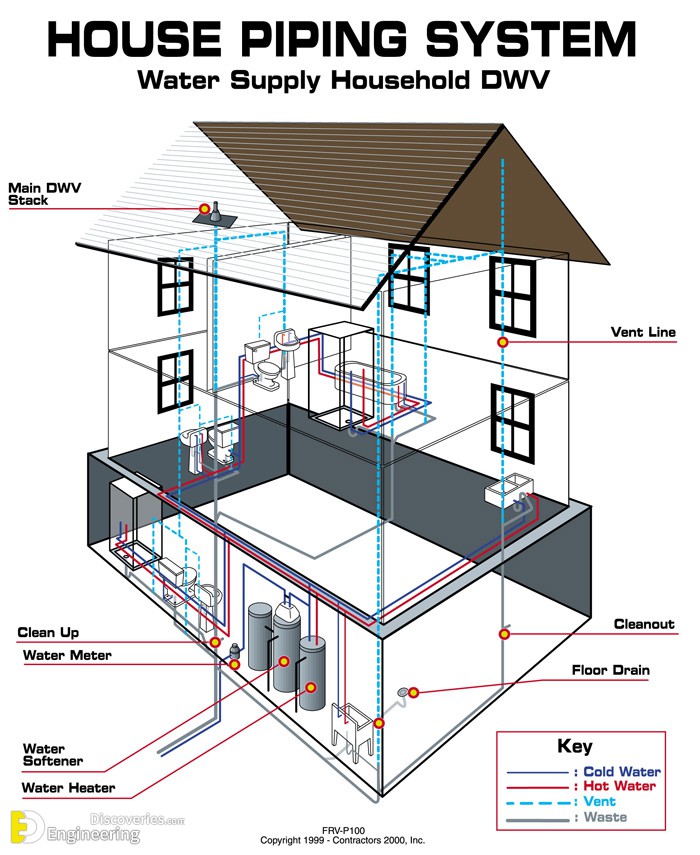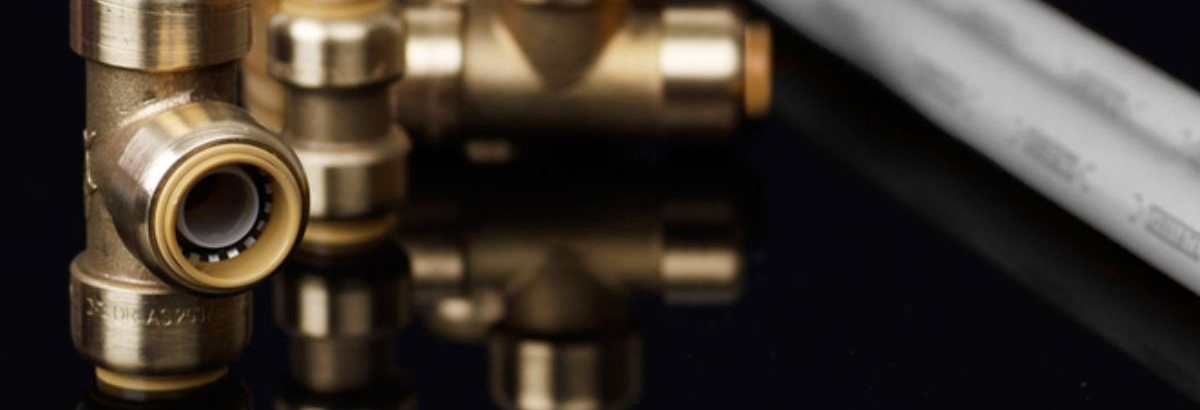They are making several good annotation relating to The Inner Workings of Your Home's Plumbing in general in this great article underneath.

Recognizing how your home's pipes system functions is necessary for every homeowner. From providing clean water for alcohol consumption, food preparation, and bathing to securely removing wastewater, a well-maintained plumbing system is crucial for your family members's health and comfort. In this thorough overview, we'll explore the elaborate network that composes your home's pipes and deal tips on upkeep, upgrades, and handling typical concerns.
Introduction
Your home's pipes system is more than simply a network of pipelines; it's an intricate system that ensures you have accessibility to tidy water and reliable wastewater removal. Knowing its components and how they work together can aid you protect against costly repair work and ensure every little thing runs smoothly.
Standard Components of a Plumbing System
Pipes and Tubing
At the heart of your plumbing system are the pipelines and tubes that carry water throughout your home. These can be constructed from numerous products such as copper, PVC, or PEX, each with its benefits in terms of sturdiness and cost-effectiveness.
Components: Sinks, Toilets, Showers, and so on.
Fixtures like sinks, commodes, showers, and bath tubs are where water is utilized in your home. Comprehending how these fixtures link to the pipes system assists in detecting troubles and intending upgrades.
Shutoffs and Shut-off Points
Valves control the flow of water in your plumbing system. Shut-off shutoffs are crucial throughout emergencies or when you need to make repairs, allowing you to separate parts of the system without interfering with water circulation to the entire residence.
Supply Of Water System
Key Water Line
The main water line connects your home to the community supply of water or a private well. It's where water enters your home and is dispersed to different fixtures.
Water Meter and Pressure Regulatory Authority
The water meter procedures your water usage, while a pressure regulator guarantees that water moves at a secure pressure throughout your home's plumbing system, protecting against damages to pipes and fixtures.
Cold Water vs. Warm water Lines
Recognizing the distinction between cold water lines, which provide water directly from the main, and hot water lines, which lug warmed water from the water heater, aids in fixing and planning for upgrades.
Drainage System
Drain Pipes Water Lines and Traps
Drain pipes lug wastewater far from sinks, showers, and toilets to the sewage system or sewage-disposal tank. Traps prevent sewage system gases from entering your home and likewise catch particles that could trigger clogs.
Air flow Pipelines
Ventilation pipes enable air right into the water drainage system, avoiding suction that can slow down drainage and trigger catches to vacant. Proper air flow is important for maintaining the integrity of your plumbing system.
Value of Proper Drainage
Making sure proper water drainage prevents back-ups and water damages. Routinely cleansing drains and preserving traps can stop costly repair services and extend the life of your pipes system.
Water Heating System
Kinds Of Hot Water Heater
Water heaters can be tankless or conventional tank-style. Tankless heating systems heat water on demand, while containers store heated water for instant usage.
Upgrading Your Pipes System
Factors for Upgrading
Updating to water-efficient components or replacing old pipes can boost water quality, decrease water bills, and enhance the worth of your home.
Modern Plumbing Technologies and Their Benefits
Discover innovations like smart leak detectors, water-saving commodes, and energy-efficient hot water heater that can save money and lower ecological impact.
Cost Considerations and ROI
Determine the ahead of time prices versus long-term savings when thinking about plumbing upgrades. Many upgrades pay for themselves with minimized energy costs and less repairs.
Just How Water Heaters Attach to the Pipes System
Understanding how water heaters link to both the cold water supply and hot water distribution lines helps in identifying problems like inadequate hot water or leaks.
Upkeep Tips for Water Heaters
Regularly purging your water heater to eliminate sediment, inspecting the temperature level settings, and checking for leakages can expand its life-span and boost power performance.
Typical Pipes Problems
Leaks and Their Causes
Leaks can take place because of aging pipes, loosened fittings, or high water pressure. Addressing leaks quickly stops water damage and mold and mildew development.
Blockages and Blockages
Obstructions in drains pipes and bathrooms are typically caused by purging non-flushable things or an accumulation of grease and hair. Using drainpipe screens and being mindful of what drops your drains can prevent blockages.
Signs of Pipes Issues to Watch For
Low tide pressure, slow drains pipes, foul odors, or uncommonly high water bills are indicators of prospective pipes issues that ought to be resolved immediately.
Pipes Maintenance Tips
Regular Assessments and Checks
Arrange yearly plumbing examinations to capture problems early. Try to find indications of leakages, rust, or mineral buildup in taps and showerheads.
DIY Maintenance Tasks
Easy tasks like cleansing faucet aerators, looking for toilet leakages using color tablets, or shielding subjected pipelines in cool climates can prevent major pipes issues.
When to Call an Expert Plumbing
Know when a pipes problem calls for specialist expertise. Attempting intricate repair services without proper understanding can bring about more damages and higher fixing costs.
Tips for Minimizing Water Use
Easy behaviors like repairing leakages quickly, taking much shorter showers, and running full tons of washing and meals can preserve water and lower your energy costs.
Eco-Friendly Plumbing Options
Think about lasting pipes materials like bamboo for flooring, which is durable and green, or recycled glass for counter tops.
Emergency situation Readiness
Steps to Take During a Pipes Emergency situation
Know where your shut-off shutoffs are located and exactly how to switch off the water supply in case of a burst pipeline or significant leakage.
Importance of Having Emergency Calls Handy
Keep get in touch with details for neighborhood plumbings or emergency services conveniently available for fast reaction during a plumbing dilemma.
Environmental Effect and Preservation
Water-Saving Components and Devices
Mounting low-flow taps, showerheads, and commodes can significantly decrease water usage without compromising performance.
DIY Emergency Fixes (When Suitable).
Momentary solutions like using duct tape to patch a leaking pipeline or positioning a pail under a trickling tap can minimize damages till a professional plumbing technician shows up.
Final thought.
Comprehending the makeup of your home's pipes system equips you to preserve it efficiently, saving time and money on repairs. By following regular maintenance regimens and remaining notified about modern pipes modern technologies, you can guarantee your pipes system operates efficiently for several years to find.
Exploring Your Homes Plumbing Anatomy
Water Supply System
Main Water Line: This is where water enters your home from the municipal supply or a private well. Water Meter: Typically located near where the main water line enters the property, it measures the amount of water used. Shutoff Valve: It s crucial to know where this is in case of emergencies. It allows you to turn off the water supply to the entire house. Pipes and Fittings: These distribute water throughout your home. Materials can include copper, PVC, or PEX. Drain-Waste-Vent (DWV) System
Drains: Located in sinks, showers, and tubs, these carry wastewater away. Traps: U-shaped pipes under sinks that hold standing water, blocking sewer gases from entering the home. Vents: Pipes that lead from the DWV system to the outside, preventing vacuum formation and allowing gases to escape. Sewer Line: Carries all wastewater from the home to the municipal sewer system or a septic tank. Fixtures and Appliances
Sinks, Toilets, and Showers Dishwashers and Washing Machines Water Heaters Maintenance Tips
Regularly check for leaks in exposed pipes and around fixtures. Inspect the water heater annually for signs of wear. Clean drains and traps to prevent clogs and odors. Know how to shut off water to individual fixtures. When to Call a Professional
Major leaks or burst pipes Installation of new pipes or fixtures Septic tank issues Remodeling projects that involve plumbing changes Conclusion
Understanding the anatomy of your home's plumbing is key to maintaining a functional and efficient system. Regular checks and knowing when to call in the experts can save you time, money, and stress.
https://www.mavyn.com/blog/exploring-your-homes-plumbing-anatomy

I was shown that report on Exploring Your Homes Plumbing Anatomy from a good friend on our other blog. Sharing is good. Helping people is fun. We enjoy reading our article about Exploring Your Homes Plumbing Anatomy.
Visit Our Website